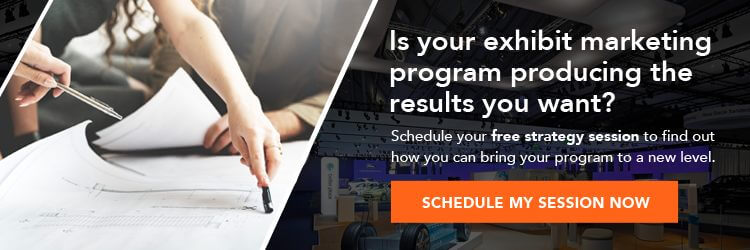According to the Center for Exhibition Industry Research (CEIR), 80-85% of what an exhibit visitor remembers when visiting your space is interaction with the exhibit staff. That’s a very big number. And yet it seems that exhibit staffing is often an afterthought—who is available to stand in our booth for three days?
Many companies, after spending thousands of dollars on an exhibit, give short shrift to ensuring that the people chosen to staff the booth are the right people, if they understand the goals and objectives of the trade show, and if they possess the necessary skills.
Who are the right people?
Except in the case of some medical exhibits where the product is not yet approved, the first answer to that question is “sales.” While that’s a good answer, it ignores the fact that many attendees don’t want to be sold. They want to ask, for example, technical and scientific questions. They have read about the product online and have some knowledge. Their goals for attending the trade show are to go deeper, to find out how something works, how the acquisition of this product or service will make their lives better. Your company’s scientists, engineers, developers—the people who know the most about the product because they helped create it—are better at engaging these influencers, who will likely have a major say as to whether their internal teams choose your product or your competitor’s.
In addition to sales and product people, consider having a public relations person at your booth. Analysts and journalists attend trade shows on a regular basis, and only a company spokesperson should talk to them—certainly not your most junior sales person. In other words, staff for a range of attendees by anticipating their interests and what role each group plays in the buying decision.
Does the staff understand the goals and objectives of the trade show?
Your trade show program is probably the largest or second largest piece of the marketing budget. To justify your costs, you develop goals and objectives. What do you hope to accomplish at any given show—and what are you going to measure to determine whether or not you were successful? You get approval for this program, and then you set about implementation.
But wait!
- Did you share this information with the exhibit staff?
- Do they know why you are at this show and what you hope to accomplish?
- Do they understand what you have done to attract attendees before the show opens?
- Have you demonstrated the various tactics available in the booth to facilitate engagement?
- Is your staff aware of the types of attendees they will encounter?
- If your show attracts a large global audience, are your staffers prepared to interact with them?
- Have you explained your content marketing strategy–which might include everything from ads and press releases to sales aids and animations?
- If one of your goals is to increase social media presence, does your staff know that—and have you told them how they can help achieve this goal?
The more information you share, including how much it costs to attend this show, the more your staffers will appreciate the trade show opportunity and take their roles seriously.
Does your staff have the necessary skills?
When you consider the amount of money spent on space, the exhibit properties, I&D—everything from lighting to hanging signs, from furniture to floral—skimping on staff training, a relatively small expense, is truly penny-wise and pound-foolish if you believe the 80-85% memorability figure we mentioned earlier.
Using a professional trainer will help your sales staff transition field sales skills to convention selling. Training will allow your engineers, chemists, and scientists to learn new communication styles which will most certainly signal a departure from the way they usually spend their days.
Don’t assume if you have senior people that they are good staffers; quite possibly they have never had trade show-specific training and have developed a lot of bad habits. On the other hand, young staff members may be engaging but need polish. Numerous studies indicate that up to five generations attend any given trade show. They will have different styles of learning and interacting, and your staff should be prepared.
Give general guidelines for dress; generally, business dress communicates professionalism. Clothes that people purchase for themselves are preferable to inexpensive, ill-fitting exhibit staff uniforms. Because your staff will be initiating the encounters, they do not need to be identifiable by “booth wear.” Remember, preparation is key; work with your trainer to anticipate questions.
Publish a work schedule, including lunch breaks. No one, no matter how enthusiastic, should be working in the booth all day. If you see a staff member struggling, pair that person with someone who has more confidence.
Above all, instill a sense of pride in your staffers. They have been chosen as the front line in this very important marketing initiative. Trade shows are exciting, and they’re fun.
Author’s note: Spring was a very busy time, and I worked at a number of trade shows. I took the opportunity to wander around show floors and observe what made an exhibit staff effective. This three-part series is based on my observations.
Planning your trade show program? Need some help? Schedule a free strategy session. We’ll help you review your plans and determine where you can heighten the impact of your show floor presence.


